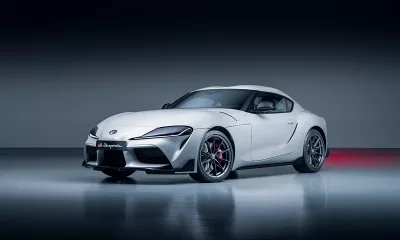Some modern aero engines designed for small ‘planes are two-stroke diesels. Intake air gets directly into the cylinder via ports in the cylinder wall. This means that the air is not first circulated through the sump as in the case of a petrol two-stroke. This removes the possibility of lubricating the crankshaft bearings, pistons and rings by means of an oil mist carried in via the fuel. How are these parts lubricated, and how clean will the exhaust fumes be?
R MARTIN – By e-mail
This layout has been used by two-stroke marine diesels for at least 70 years, and results in a very efficient engine. The intake air is usually forced into the cylinder via the ports by a supercharger at low speed and a turbo at higher engine speeds, which is why crankcase compression and transfer ports are not needed. Such an engine can thus employ drillings in the crankshaft, just like a normal four-stroke petrol engine, to feed oil to the various parts from a normal sump. The exhaust fumes will be as clean as a modern diesel catalytic converter can make them.




